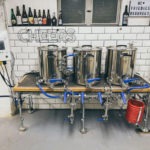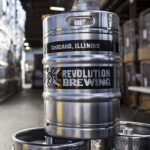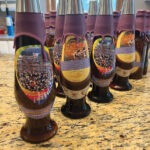Articles
Barbecuing With Beer
Beer and barbecue don’t always have to be two separate things. Beer can enhance flavors of many foods, BBQ included! Here are 5 unique BBQ recipes from the Executive Chef of Deschutes Brewery.
Braggot
Braggot is a unique beverage that is part mead and part beer. Different from honey beer as a larger percent of its fermentables come from honey, yet braggots can be made with a base beer style in mind. Learn more about what braggot is and three different approaches to making one.
Sulfur Dioxide in Brewing
Sulfur dioxide is capable of scrubbing oxygen from beer, leading to better protection against negative effects aging can have on beer. But it isn’t a silver bullet and must be carefully understood.
The Special Altbiers of Düsseldorf
Each fall, four of the five remaining classic altbier breweries in Düsseldorf, Germany, have annual special beer releases. They are bigger versions of the delicious altbier that they brew and serve every day. Jamil Zainasheff made a trip so he could attend the release
of three of them in 2023 and returned home with information on how homebrewers can recreate these beers themselves.
Yeast Flocculation
Yeast suppliers list flocculation attributes of each yeast strain, but what exactly does it mean, and why should we take it into consideration when choosing a strain? Find out.
Working Draft Beer Co.
The Replicator heads to Wisconsin to find an honest-to-goodness helles that is the first to remind a reader of authentic examples previously enjoyed in Germany.
Three-Vessel Brewing Systems
Three-vessel brew systems were the norm for all-grain homebrewers for the last few decades. Learn about the various configurations.
Brewing Up a Revolution
From a humble brewpub in Chicago’s Logan Square neighborhood to the largest craft brewery in Illinois, Revolution Brewing Co. has become a force of nature in the craft beer world. Leading the charge is still an IPA from those early days, but the supporting cast of hoppy ales, big beers from its barrel-aging program, and fruited sours offers something for everyone. The brewers at Revolution were more than happy to share their brewing advice so we, too, can brew beers worthy of a Revolution.
Self-Auditing Your Brewery
Craft beer has reached a reflection point. Financial wiz Audra Gaiziunas is here to sit down with nanobrewers to make sure they’re doing a proper job in the bookkeeping department.
Brewing No-Boil NEIPA
Boiling wort is usually a part of the process when producing beer. However, there are historical styles that are made without boiling, and what brewers have learned from these beers is causing some to consider skipping the boil with modern styles, especially hazier styles with low bitterness, such as New England IPA.












